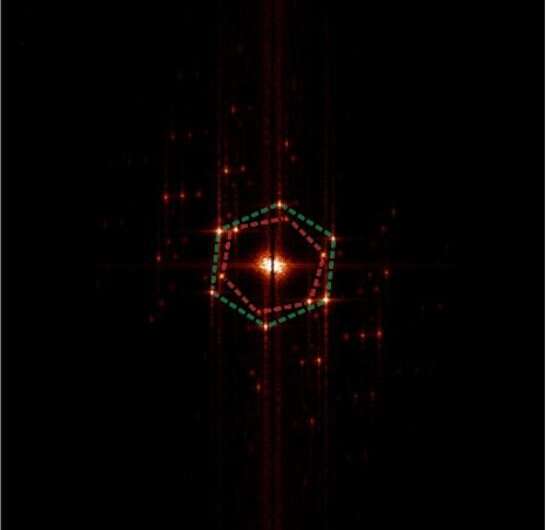Credit: University of Manchester
Researchers at the University of Manchester have uncovered interesting phenomena when multiple two-dimensional materials are combined into van der Waals heterostructures (layered "sandwiches" of different materials).
These heterostructures are sometimes compared to Lego bricks, where the individual blocks represent different atomically thin crystals, such as graphene, and are stacked on top of each other to form new devices.
Published in Science Advances, the team focused on how the different crystals begin to alter one another's fundamental properties when brought into such close proximity. Of particular interest is when two crystals closely match and a moiré pattern forms. This moiré pattern has been shown to affect a range of properties in an increasing list of 2-D materials. However, typically, the geometry of the moiré pattern places a restriction on the nature and size of the effect.
A moiré pattern is due to the mismatch and rotation between the layers of materials, which produces a geometric pattern similar to a kaleidoscope.
The team broke this restriction by combining moiré patterns into a composite "super-moiré" in graphene, both aligning to substrate and encapsulation hexagonal boron nitride. The researchers demonstrated the nature of these composite super-moiré lattices by showing band structure modifications in graphene in the low-energy regime. Furthermore, they suggest that the results could provide new directions for research and device fabrication.
Zihao Wang and Colin Woods, authors of the paper, said: "In recent years, moiré patterns have allowed the observation of many exciting physical phenomena, from new, long-lived excitonic states, Hofstadter's butterfly, and superconductivity. Our results push through the geometric limitation for these systems and therefore present new opportunities to see more of such science, as well as new avenues for applications."
More information: Zihao Wang et al. Composite super-moiré lattices in double-aligned graphene heterostructures, Science Advances (2019). DOI: 10.1126/sciadv.aay8897
Journal information: Science Advances
Provided by University of Manchester























